History of U.S. Thanksgiving Holiday
The History of Fall Harvest Celebrations goes back to the ancient Egyptians, Greeks, and Romans. The Jewish Holiday of Sukkot is known as the “Festival of Ingathering” and held at the end of harvest.
The Pilgrims may have been influenced by watching the annual services of thanksgiving for the relief of the siege of Leiden in 1574, while they were staying in Leiden in the Netherlands. Leiden’s autumn thanksgiving celebration is now called Oktober Feest.
In what is now the United States, there are accounts of a harvest celebration held at St. Augustine, Florida by the Spanish explorer Pedro Menéndez de Avilés and the local Timucua Tribe as early as 1565. And in San Elizario, Texas in 1598. Native Indians were also known to celebrate a bountiful harvest in the fall.
The 1619 arrival of 38 English settlers at Berkeley Hundred in Charles City County, Virginia, concluded with a religious celebration as dictated by the group’s charter from the London Company, which specifically required “that the day of our ships arrival at the place assigned … in the land of Virginia shall be yearly and perpetually kept holy as a day of thanksgiving to Almighty God.”
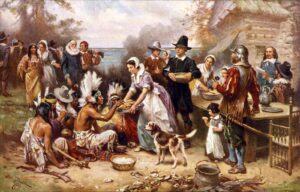 Traditionally it is believed that a day of thanksgiving was begun by the Pilgrims at Plymouth Colony in 1621 and was considered a harvest celebration. Nearly all of what historians have learned about the first Thanksgiving comes from a single eyewitness report: a letter written in December 1621 by Edward Winslow, one of the 102 passengers plus 30 crew members who sailed from England aboard the Mayflower in 1620 and founded Plymouth Colony in Massachusetts.
Traditionally it is believed that a day of thanksgiving was begun by the Pilgrims at Plymouth Colony in 1621 and was considered a harvest celebration. Nearly all of what historians have learned about the first Thanksgiving comes from a single eyewitness report: a letter written in December 1621 by Edward Winslow, one of the 102 passengers plus 30 crew members who sailed from England aboard the Mayflower in 1620 and founded Plymouth Colony in Massachusetts.
Upon landing in the New World, the Pilgrims were met by a native Abenaki Indian who brought with him a Pawtuxet Indian named Squanto who spoke English. Squanto had lived in a village known as “Port St. Louis”. In 1614 many natives had been captured and taken to England as slaves, including Tisquantum who eventually came to be known as Squanto. He was bought by English monks who focused on his education and conversion to Christianity. He finally returned to his native land in 1619 to find that he was the only survivor of his Puwtuxet tribe, the remainder having been wiped out by an smallpox epidemic. When the Pilgrim Settlers decided to make their settlement, the land had been cleared and cultivated by the prior inhabitants of Port St. Louis.
Squanto lived with the Pilgrims, helping them to plant and cultivate beans, maize and squash. He served as an interpreter and provided guidance to them in navigating and fishing the waters around the settlement. Squanto died in 1622.
For the Pilgrims, the feast was to celebrate a successful harvest and the fact that they had survived their first year. Just over 50 colonists are believed to have attended, including 22 men, four married women and more than 25 children and teenagers. Some 78 percent of the women who had arrived on the Mayflower had died during the first winter. Over 90 natives attended, including Wampanoag Indian’s “greatest King, Massasoit”.
Various colonies in the north continued to celebrate the harvest by giving thanks. The event was unknown in the southern colonies. The Continental Congress (1774-1775) designated one or more days per year for this purpose.
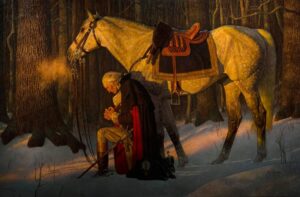 In 1789 George Washington issued a proclamation calling upon Americans to express their gratitude for the happy conclusion to the country’s War of independence and the successful ratification of the U.S. Constitution. Presidential proclamations were also issued by John Adams and James Madison during their presidencies.
In 1789 George Washington issued a proclamation calling upon Americans to express their gratitude for the happy conclusion to the country’s War of independence and the successful ratification of the U.S. Constitution. Presidential proclamations were also issued by John Adams and James Madison during their presidencies.
Thomas Jefferson was famously the only Founding Father and early president who refused to declare days of thanksgiving and fasting in the United States. Unlike his political rivals, the Federalists, Jefferson believed in “a wall of separation between Church and State” and believed that endorsing such celebrations as president would amount to a state-sponsored religious worship.
In 1817, New York became the first of several states to officially adopt an annual Thanksgiving holiday.
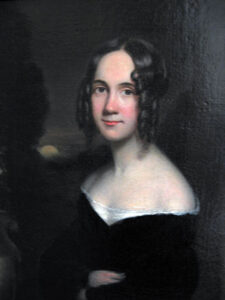 In 1827 Sarah Josepha Hale (who wrote “Mary had a Little Lamb”) launched a campaign to make Thanksgiving a national holiday and she was finally successful in 1863 when President Abraham Lincoln issued a proclamation entreating all Americans to ask God to “commend to his tender care all those who have become widows, orphans, mourners or sufferers in the lamentable civil strife” and to “heal the wounds of the nation.” He designated the last Thursday of November as Thanksgiving Day.
In 1827 Sarah Josepha Hale (who wrote “Mary had a Little Lamb”) launched a campaign to make Thanksgiving a national holiday and she was finally successful in 1863 when President Abraham Lincoln issued a proclamation entreating all Americans to ask God to “commend to his tender care all those who have become widows, orphans, mourners or sufferers in the lamentable civil strife” and to “heal the wounds of the nation.” He designated the last Thursday of November as Thanksgiving Day.
The holiday was annually proclaimed by every president thereafter, and the date chosen, with few exceptions, was the last Thursday in November.
Concerned that the Christmas shopping season was cut short by a late Thanksgiving, President Franklin Delano Roosevelt decreed in 1939 that Thanksgiving would be celebrated a week earlier. “Franksgiving,” as it was known, was decried by Thanksgiving traditionalists and political rivals (one even compared FDR to Hitler) and was only adopted by 23 of the 48 states.
Congress officially moved Thanksgiving back to the fourth Thursday of November in 1941, where it has remained ever since.
Thanksgiving Traditions:
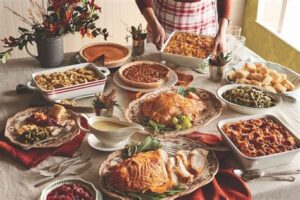 The most classic Thanksgiving tradition is the Thanksgiving meal with turkey and side dishes; stuffing (also called dressing), potatoes, cranberry sauce, gravy, green beans, or other seasonal vegetables and pumpkin pie. Regional differences include white mashed potatoes and bread stuffing with pumpkin pie in the north; sweet potatoes and corn stuffing with pecan pie in the south.
The most classic Thanksgiving tradition is the Thanksgiving meal with turkey and side dishes; stuffing (also called dressing), potatoes, cranberry sauce, gravy, green beans, or other seasonal vegetables and pumpkin pie. Regional differences include white mashed potatoes and bread stuffing with pumpkin pie in the north; sweet potatoes and corn stuffing with pecan pie in the south.
 Macy’s Day Parade: The annual Macy’s Thanksgiving Day Parade in New York City is the world’s largest parade. The parade started in 1924, tying it for the second-oldest Thanksgiving parade in the United States with America’s Thanksgiving Parade in Detroit (with both parades being four years younger than Philadelphia’s Thanksgiving Day Parade). The three-hour parade is held in Manhattan, ending outside Macy’s Herald Square, and takes place from 9:00 a.m. to 12:00 p.m. Eastern Standard Time on Thanksgiving Day, and has been televised nationally on NBC since 1952. Santa Claus arrives at the end of the parade, marking the beginning of the Christmas season. The Christmas shopping season begins the day after Thanksgiving, known as “Black Friday”.
Macy’s Day Parade: The annual Macy’s Thanksgiving Day Parade in New York City is the world’s largest parade. The parade started in 1924, tying it for the second-oldest Thanksgiving parade in the United States with America’s Thanksgiving Parade in Detroit (with both parades being four years younger than Philadelphia’s Thanksgiving Day Parade). The three-hour parade is held in Manhattan, ending outside Macy’s Herald Square, and takes place from 9:00 a.m. to 12:00 p.m. Eastern Standard Time on Thanksgiving Day, and has been televised nationally on NBC since 1952. Santa Claus arrives at the end of the parade, marking the beginning of the Christmas season. The Christmas shopping season begins the day after Thanksgiving, known as “Black Friday”.
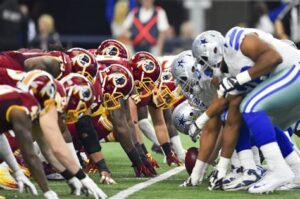 Football: The concept of American football games being played on Thanksgiving Day dates back to 1876, shortly after the game had been invented. Since 1978, Thanksgiving games have been hosted in Detroit and Dallas every year, with Detroit in the early time slot and Dallas in the late afternoon slot.
Football: The concept of American football games being played on Thanksgiving Day dates back to 1876, shortly after the game had been invented. Since 1978, Thanksgiving games have been hosted in Detroit and Dallas every year, with Detroit in the early time slot and Dallas in the late afternoon slot.
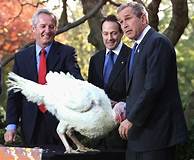 Presidential Pardon: An 1865 dispatch by a White House reporter stated that President Lincoln granted clemency to a turkey that was gifted to the family. According to the dispatch by White House reporter Noah Brooks, President Lincoln’s son Tad intervened on behalf of the turkey and asked for the turkey’s life to be spared.
Presidential Pardon: An 1865 dispatch by a White House reporter stated that President Lincoln granted clemency to a turkey that was gifted to the family. According to the dispatch by White House reporter Noah Brooks, President Lincoln’s son Tad intervened on behalf of the turkey and asked for the turkey’s life to be spared.
Turkeys were routinely given as gifts to presidents throughout the years following the Lincoln presidency. In the 1870s, during the Grant administration, a Rhode Island poultry dealer name Horace Vose started sending turkeys to the White House consistently as gifts during the holiday season. Mr. Vose was known as the “Poultry King”. The turkey was a symbol of good cheer and an important symbol for the holiday season.
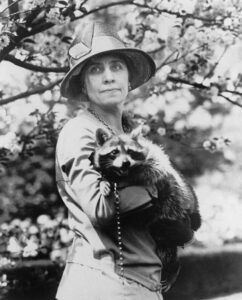 In late November 1926, a live animal sent by one Vinnie Joyce of Nitta Yuma, Mississippi, arrived at the White House to be slaughtered and served up for that year’s Thanksgiving dinner. President Calvin Coolidge, however, became smitten by the beast and instead granted it a pardon. The lucky creature was no turkey, though, but a raccoon. Coolidge adopted the raccoon as a presidential pet and named her Rebecca. Rebecca became the president’s companion walking around the White House grounds on a leash during the day, and at night she would crawl up into her master’s lap in front of the fireplace. After moving into a Dupont Circle mansion in March 1927 while the White House underwent renovation, the chief executive missed Rebecca so much that he brought her back with him in the presidential limousine to his temporary quarters. Stories of Rebecca’s adventures are told at History.com
In late November 1926, a live animal sent by one Vinnie Joyce of Nitta Yuma, Mississippi, arrived at the White House to be slaughtered and served up for that year’s Thanksgiving dinner. President Calvin Coolidge, however, became smitten by the beast and instead granted it a pardon. The lucky creature was no turkey, though, but a raccoon. Coolidge adopted the raccoon as a presidential pet and named her Rebecca. Rebecca became the president’s companion walking around the White House grounds on a leash during the day, and at night she would crawl up into her master’s lap in front of the fireplace. After moving into a Dupont Circle mansion in March 1927 while the White House underwent renovation, the chief executive missed Rebecca so much that he brought her back with him in the presidential limousine to his temporary quarters. Stories of Rebecca’s adventures are told at History.com
In 1946, The National Turkey Federation and the Poultry and Egg National Board became the official provider of turkeys. For many years, it was determined that President Truman started the modern pardoning of the turkey, however, his presidential library disputes this claim. President Truman was photographed receiving a 42-pound bird, but according to his presidential library, President Truman never pardoned the turkey.
President Eisenhower continued to receive a turkey from the Board. The Eisenhower Library’s documents say the President and his family enjoyed turkey dinners every year of his two terms.
President Kennedy was the first president to spare a turkey, but Kennedy did not officially give a pardon. President Kennedy publicly stated that the turkey gifted to him was not going to be eaten and to be sent back to those who gifted to him.
Jimmy Carter refused to take part in the presentation and rejected the turkeys given to him. First Lady Rosalynn Carter arranged to have the turkeys sent to petting zoos.
Presidents Johnson, Nixon, Ford, and Reagan were all photographed at press conferences where the turkeys were presented as gifts. However, the word “pardon” was still never formally used. In 1987, President Reagan became the first president to use the word “pardon” during an informal exchange with reporters. Charlie the turkey was gifted to President Reagan by The National Turkey Federation, pardoned, and then sent to a petting zoo in Fairfax, Virginia.
President George H.W. Bush made the official pardon of a turkey in 1989. President Bush claimed that this turkey was going to be spared and that he would receive an official pardon from the President. The turkey was sent to live at Frying Pan Park in Herndon, Virginia.
Starting with President Clinton, two turkeys have been “pardoned”, with a backup or alternate turkey. That began the practice of naming the turkeys such as Liberty and Freedom in 2001; Stars and Stripes; Biscuits and Gravy; and, in 2019, Bread and Butter.
From then on, the turkey pardon has been a staple every Thanksgiving.
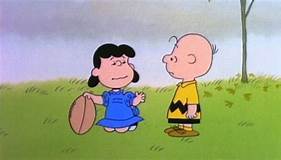 A more current tradition is the airing of “A Charlie Brown Thanksgiving”. First broadcast in 1973, it has become a classic.
A more current tradition is the airing of “A Charlie Brown Thanksgiving”. First broadcast in 1973, it has become a classic.
Thanksgiving Around the World:
In Brazil, Thanksgiving Day (Dia de Acao de Gracas) is celebrated to express gratitude and appreciation to the Almighty for the abundant harvest throughout the year and for all his blessings. It is also held on the fourth Thursday in November.
The Thanksgiving Day in Brazil is known for its huge carnival.
In Canada, Thanksgiving is celebrated on the second Monday in October. When Sir Martin Frobisher sailed from England to the Canadian territory in 1578, he and his crew celebrated with salt beef and mushy peas and thoroughly gave thanks for making it across the ocean safely. The Pilgrims didn’t arrive at Plymouth until 1621, but American Thanksgiving became a national holiday nearly a century before its Canadian counterpart did in 1879. It’s an official statutory holiday throughout Canada except in New Brunswick, Nova Scotia and Prince Edward Island. Federal offices and most retail stores are closed but it’s not a paid holiday in those provinces.
In Grenada, Thanksgiving Day is a public holiday that commemorates the anniversary of the October 25, 1983 Caribbean and American military intervention in Grenada. A joint military force arrived in Grenada to restore stability to the country following the deaths of then Prime Minister Maurice Bishop and some of his colleagues.
Liberia is a country in West Africa that was founded by freed American and Caribbean slaves in the early 19th century. Today, the founding slaves’ descendants only make up about 5 percent of the country’s current population, but several traditions that they imported from the States, Thanksgiving included, are celebrated. Liberians celebrate Thanksgiving on the first Thursday of November. It’s generally considered to be a day for Liberians to give thanks for freedom and the founding of their country. Like in the States, people gather for a special meal, as well as concerts and dancing.
As far as their traditional Thanksgiving menu goes, Liberians have adapted the meal to the tastes of the region by serving dishes like roasted chicken, mashed cassavas (yucca root), and green bean casserole. Some folks even add a little extra spice to their meal with peppers like cayenne.
Saint Lucia celebrates Thanksgiving Day on the first Monday of October. This date differs from the US and Canadian holidays by the same name. It is a harvest festival traditionally intended as a chance to thank God for the bounty of the land.
Norfolk Island is tiny, both in size and population. An Australian territory hundreds of miles from the mainland, it’s home to fewer than 2,000 inhabitants. In 1887, one Norfolk Island resident, Isaac Robinson, became the American consul, making him a diplomatic representative of the United States. One year, the story goes, Robinson wanted to celebrate Thanksgiving. He observed the holiday by decorating the pews of the All Saints Church with palm leaves and lemons. When Robinson died at sea, the islanders kept up the practice, which was shored up by American sailors in later decades.
Leiden (Netherlands) celebrates Thanksgiving on the third Thursday of every November. A group of Separatists (from the Church of England) left England in 1608 and settled in Leiden. In 1620 they left Leiden on the Mayflower and are today called “Pilgrims”. Leiden had a profound influence on the lives of the Pilgrims – even after their departure. ‘Civil marriage’ was one innovation that the Pilgrims took with them to the new world. According to Mayflower400, since the Pilgrims came to American no fewer than nine of their descendants have made it to President.
The Mayflower Society lists the genealogical connections
- John Adams – 1797-1801,
- His son John Quincy Adams – 1825-1829
- George H.W. Bush – 1989-1993
- His son, George W. Bush – 2001-2009
- Zachary Taylor – 1849-1850
- Ulysses S. Grant – 1869-1877
- James A. Garfield – 1881-1881
- Calvin Coolidge (1923-1929)
- Franklin D. Roosevelt – 1933-1945
- Barack H. Obama — 2009 – 2016, deserves an honorable mention for having Pilgrim roots; however, he is not a direct descendant of a Mayflower passenger. His ancestor, Thomas Blossom, had his sights set on the New World and boarded the Speedwell, sister ship of the Mayflower; however, a leak forced the ship to turn around. Blossom and his wife left Leiden for Plymouth nine years after the initial settlement arrived, on a ship also called the Mayflower.
Every year in Leiden there is a Thanksgiving Day Service held at the Pieterskerk, a beautiful church. One of the Pilgrim leaders, John Robinson, is buried here.
